Picture your home transformed by cascading vines and elegant tendrils, bringing life to empty corners and bare walls. If you’re ready to start your indoor gardening journey, trailing plants offer the perfect blend of beauty and simplicity for beginners. From the nearly indestructible Pothos to the whimsical String of Pearls, each plant brings its own unique character and care requirements. Discover which of these ten resilient climbers will thrive in your space.
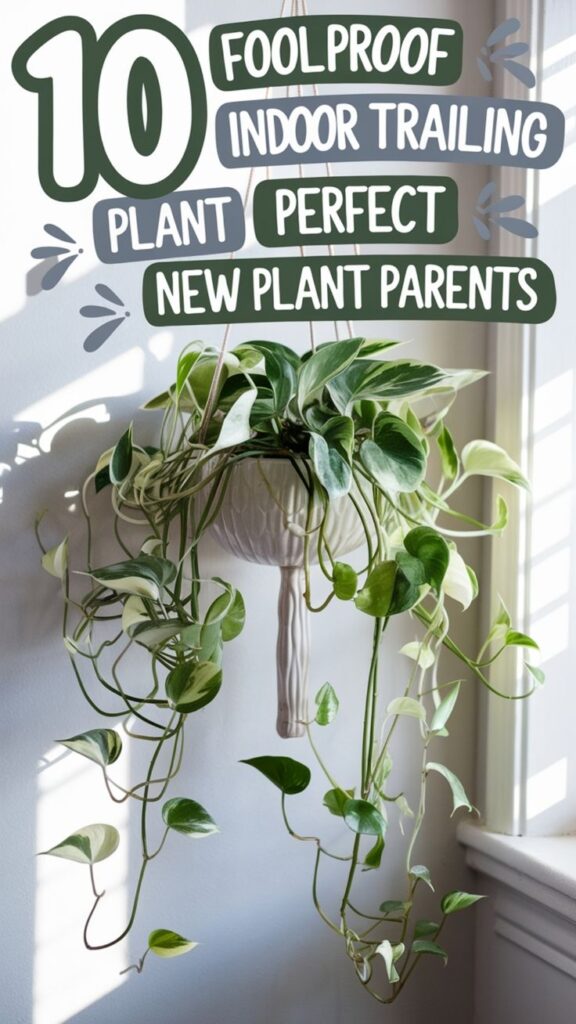
Contents
- 1 Pothos: The Perfect Starter Trailing Plant
- 2 String of Pearls: Nature’s Living Necklace
- 3 Spider Plant: The Cascading Classic
- 4 Philodendron Brasil: Vibrant Trailing Beauty
- 5 English Ivy: Elegant and Adaptable
- 6 String of Hearts: Delicate Trailing Charm
- 7 Wandering Jew: Purple Trailing Wonder
- 8 Swedish Ivy: Compact and Graceful
Pothos: The Perfect Starter Trailing Plant
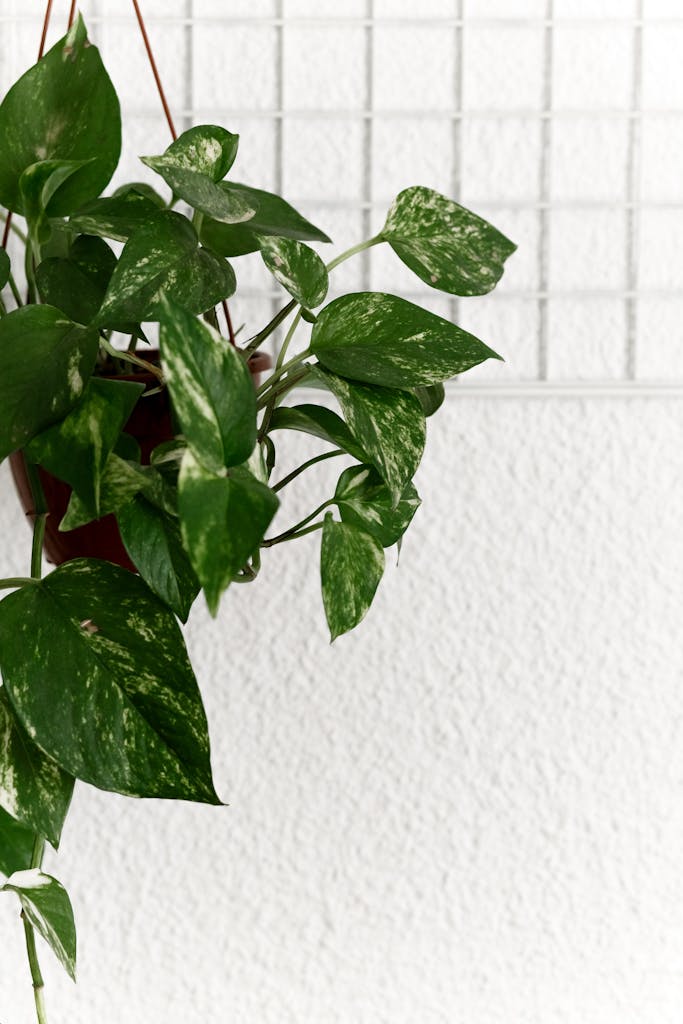
Pothos (Epipremnum aureum) is a popular and highly adaptable trailing plant that’s perfect for beginners due to its forgiving nature and ease of care. Known for its heart-shaped leaves that come in various patterns and colors, including green, yellow, and white variegation, this vine can grow several feet long when properly maintained. Its durability and air-purifying qualities make it an excellent choice for homes and offices, while its trailing stems can beautifully cascade from hanging baskets or climb up moss poles.
- Light: Tolerates low to bright indirect light; avoid direct sunlight which can burn leaves
- Water: Allow top 1-2 inches of soil to dry between waterings; water less in winter
- Soil: Well-draining potting mix with good aeration
- Humidity: Adapts to average indoor humidity levels (40-60%)
- Temperature: Thrives in 60-80°F (15-27°C)
- Fertilizer: Feed with balanced liquid fertilizer every 4-6 weeks during growing season
- Container: Any pot with drainage holes; can be plastic, ceramic, or terra cotta
- Propagation: Easily propagated through stem cuttings in water or soil
String of Pearls: Nature’s Living Necklace
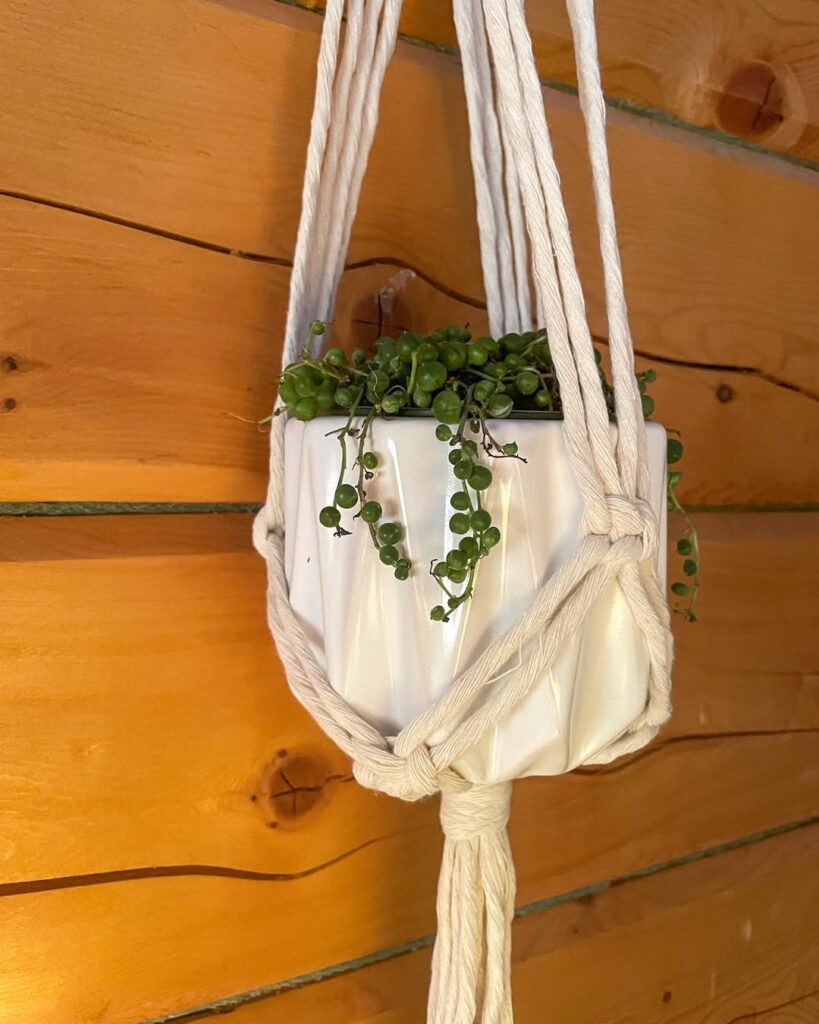
String of Pearls (Senecio rowleyanus) is a enchanting succulent known for its distinctive pearl-like leaves that cascade down from hanging baskets or tall pots. These delicate green spheres grow along thin, thread-like stems that can trail up to 3 feet long, creating the appearance of a living beaded necklace. Native to southwest Africa, this unique plant not only serves as an eye-catching decorative piece but also stores water in its bead-shaped leaves, making it drought-tolerant and relatively low-maintenance for indoor growing.
- Light: Bright, indirect sunlight; can tolerate some direct morning sun but needs protection from harsh afternoon rays
- Water: Allow soil to dry between waterings; water sparingly in winter; avoid overwatering
- Soil: Well-draining succulent or cactus mix
- Temperature: 70-80°F (21-27°C); can tolerate down to 50°F (10°C)
- Humidity: Average home humidity levels; tolerates dry conditions
- Container: Hanging basket or elevated pot with drainage holes
- Fertilizer: Light feeding with balanced fertilizer during growing season
- Propagation: Easily propagated through stem cuttings
Spider Plant: The Cascading Classic

Spider Plants (Chlorophytum comosum) are beloved trailing houseplants known for their arching stems decorated with long, narrow leaves in solid green or variegated patterns. True to their name, these plants produce delicate, spindly stems called stolons that dangle downward, bearing miniature plantlets that resemble spiders suspended on a web. These baby plants can be left to cascade or propagated to create new specimens, making the Spider Plant both decorative and easy to multiply.
- Light: Bright to moderate indirect light; avoid direct sunlight which can scorch leaves
- Water: Keep soil moderately moist; allow top inch to dry between waterings
- Soil: Well-draining potting mix with good aeration
- Temperature: 60-75°F (15-24°C)
- Humidity: Tolerates average household humidity
- Fertilizer: Light feeding with balanced fertilizer during growing season
- Container: Use pot with drainage holes; hanging baskets ideal for showcasing trailing stems
- pH level: 6.0-7.2
- Propagation: Division or plantlets can be rooted in water or soil
Philodendron Brasil: Vibrant Trailing Beauty
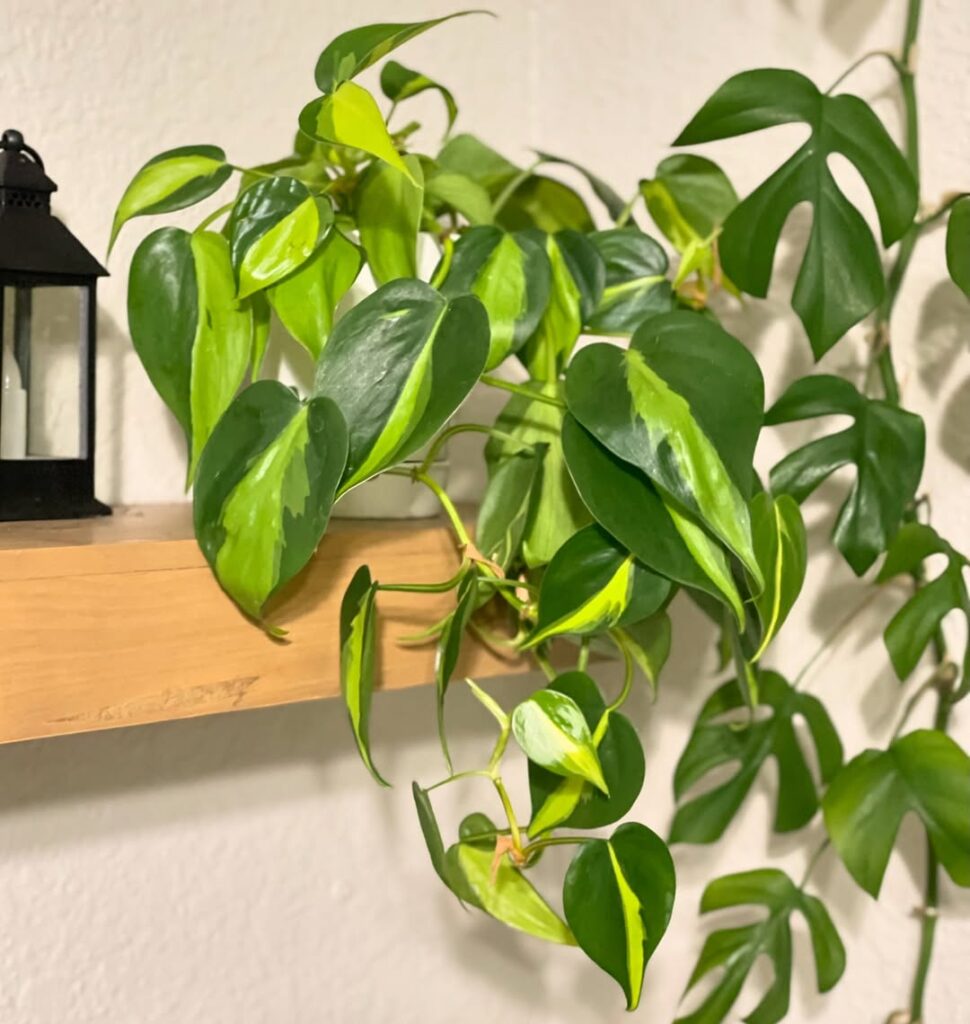
Philodendron Brasil is a enchanting trailing plant known for its heart-shaped leaves featuring distinctive variegation in shades of lime green and dark green. This variety of Philodendron hederaceum grows long vines that can cascade elegantly from hanging baskets or climb up trellises, making it a versatile choice for indoor spaces. The Brasil’s vibrant foliage and easy-care nature have made it a popular choice among houseplant enthusiasts.
- Light: Bright indirect light; can tolerate medium light but avoid direct sun which can burn leaves
- Water: Allow top 1-2 inches of soil to dry between waterings; reduce watering in winter
- Soil: Well-draining, rich potting mix with good aeration
- Humidity: Moderate to high; benefits from regular misting or humidifier
- Temperature: 65-80°F (18-27°C); avoid cold drafts
- Fertilizer: Feed monthly during growing season with balanced liquid fertilizer
- Pruning: Trim leggy vines to promote bushier growth
- Toxicity: Toxic to pets and humans if ingested
English Ivy: Elegant and Adaptable
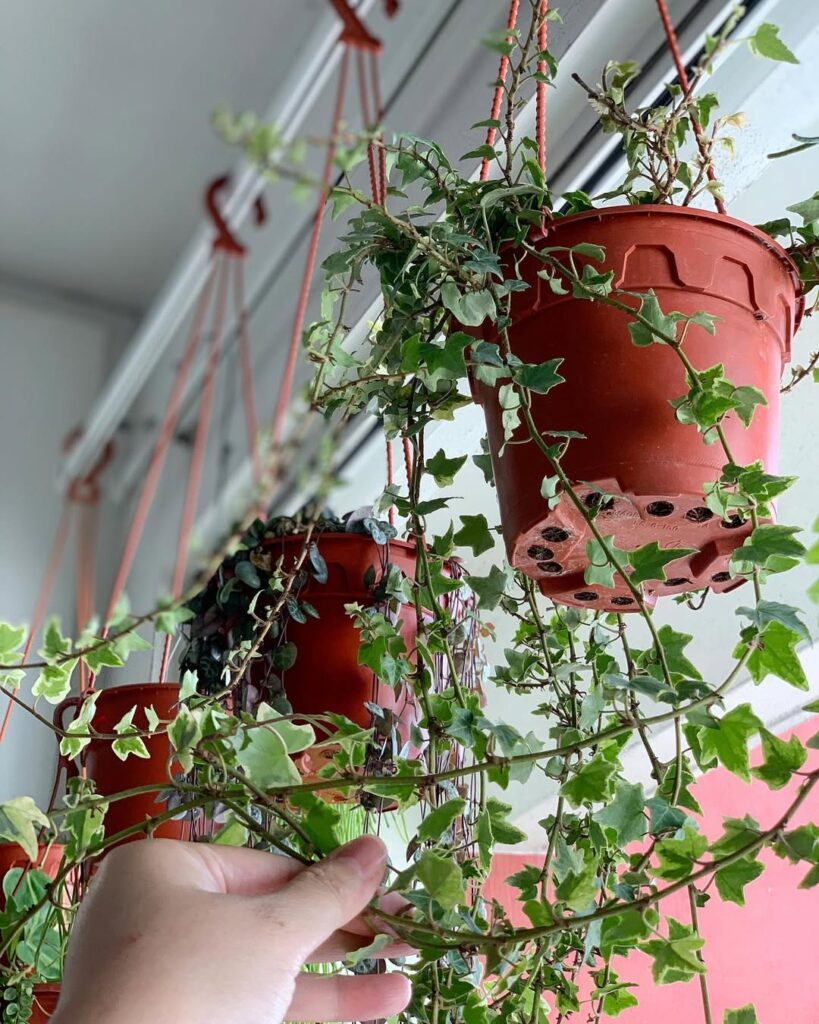
English Ivy (Hedera helix) is a classic trailing plant known for its elegant appearance and remarkable adaptability to indoor environments. With its distinctive lobed leaves and flowing vines that can reach impressive lengths, this versatile plant adds a touch of traditional charm to any indoor space. Whether cascading from hanging baskets, climbing walls with support, or spilling over shelves, English Ivy‘s dense foliage creates a lush, timeless look that complements various interior styles.
- Light: Bright indirect light to partial shade; can tolerate low light but may grow slower
- Water: Keep soil consistently moist but not waterlogged; allow top inch to dry between waterings
- Soil: Well-draining potting mix rich in organic matter
- Humidity: Prefers moderate to high humidity; mist regularly in dry conditions
- Temperature: 60-75°F (15-24°C)
- Fertilizer: Feed monthly during growing season with balanced liquid fertilizer
- Pruning: Trim regularly to control growth and maintain desired shape
- Support: Provide trellis or stakes if upward growth is desired
String of Hearts: Delicate Trailing Charm
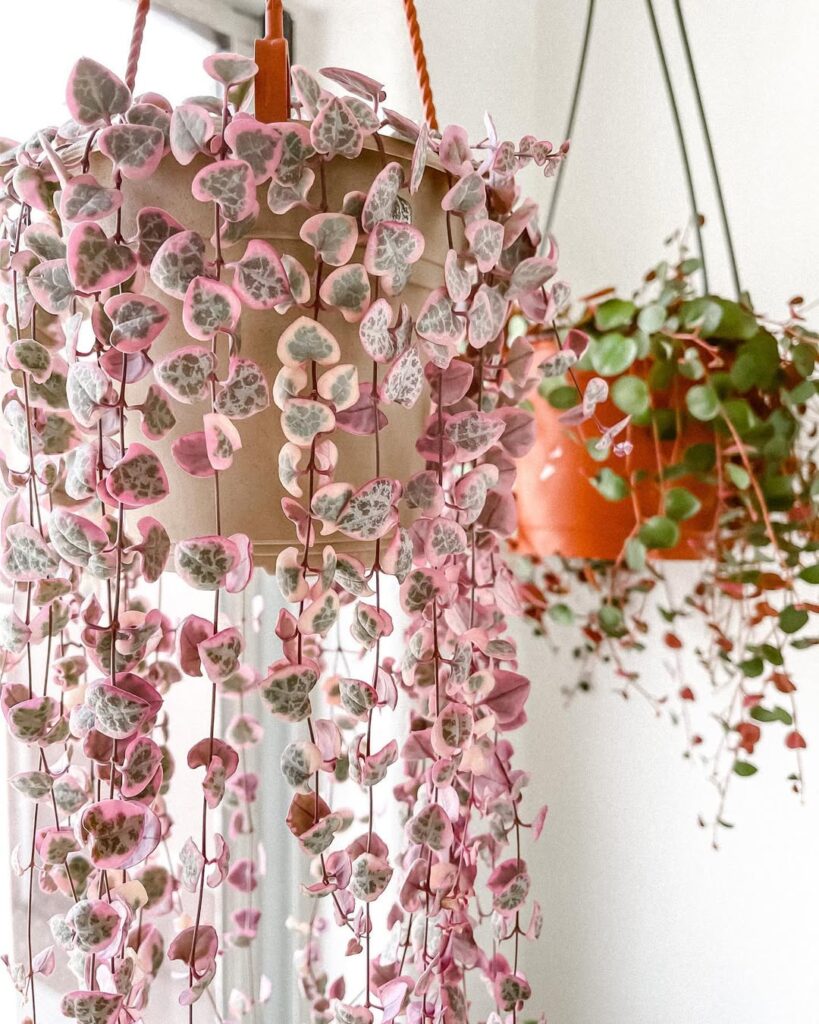
The String of Hearts (Ceropegia woodii) is a dainty trailing succulent known for its delicate heart-shaped leaves that cascade down from hanging baskets or tall containers. Its slender purple stems support small, marbled gray-green and silver leaves, creating an elegant waterfall effect that can grow several feet long. This South African native adds a romantic touch to any indoor space while being relatively easy to maintain.
- Light: Bright, indirect light; can tolerate some direct morning sun; protect from harsh afternoon sun
- Water: Allow soil to dry between waterings; reduce watering in winter
- Soil: Well-draining succulent or cactus mix
- Temperature: 65-80°F (18-27°C); can tolerate cooler temperatures
- Humidity: Tolerates average household humidity
- Fertilizer: Feed with diluted balanced fertilizer every 4-6 weeks during growing season
- Potting: Use containers with drainage holes; shallow pots are preferred
- Propagation: Easy to propagate from stem cuttings or tubers
Wandering Jew: Purple Trailing Wonder
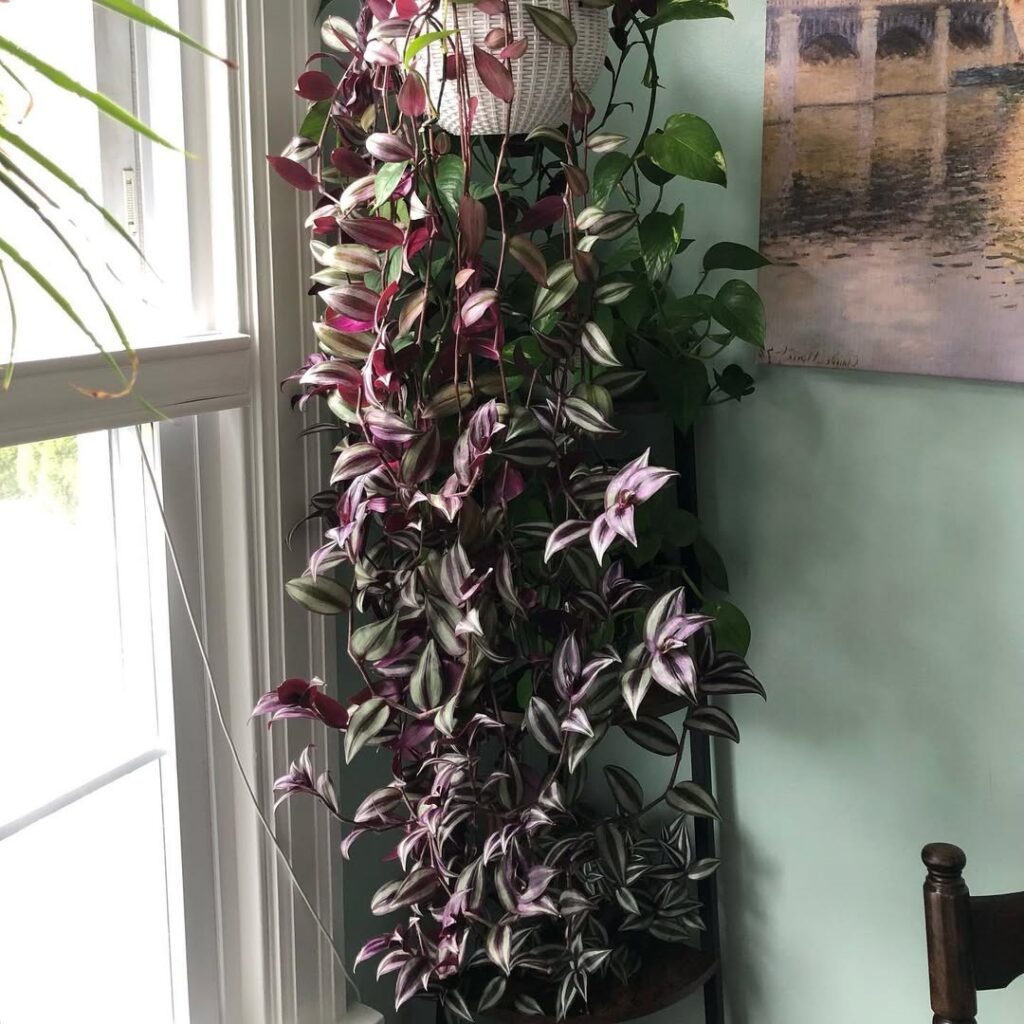
The Wandering Jew (Tradescantia zebrina) is a striking trailing plant known for its vibrant purple and silver striped leaves that cascade elegantly from hanging baskets or tall shelves. This fast-growing plant features fleshy stems and elongated oval leaves with metallic purple undersides, creating a stunning visual display as it spreads. Its ease of propagation and robust growth habit make it a popular choice for indoor gardeners looking to add dramatic color and movement to their space.
- Light: Bright, indirect light; can tolerate some direct morning sun but avoid harsh afternoon light
- Water: Keep soil consistently moist but not waterlogged; water when top inch of soil feels dry
- Soil: Well-draining potting mix with good organic content
- Humidity: Moderate to high; benefits from regular misting
- Temperature: 60-80°F (15-27°C)
- Fertilizer: Feed monthly during growing season with balanced liquid fertilizer
- Pruning: Regular trimming to maintain shape and promote fuller growth
- Container: Hanging baskets or containers with drainage holes
Swedish Ivy: Compact and Graceful
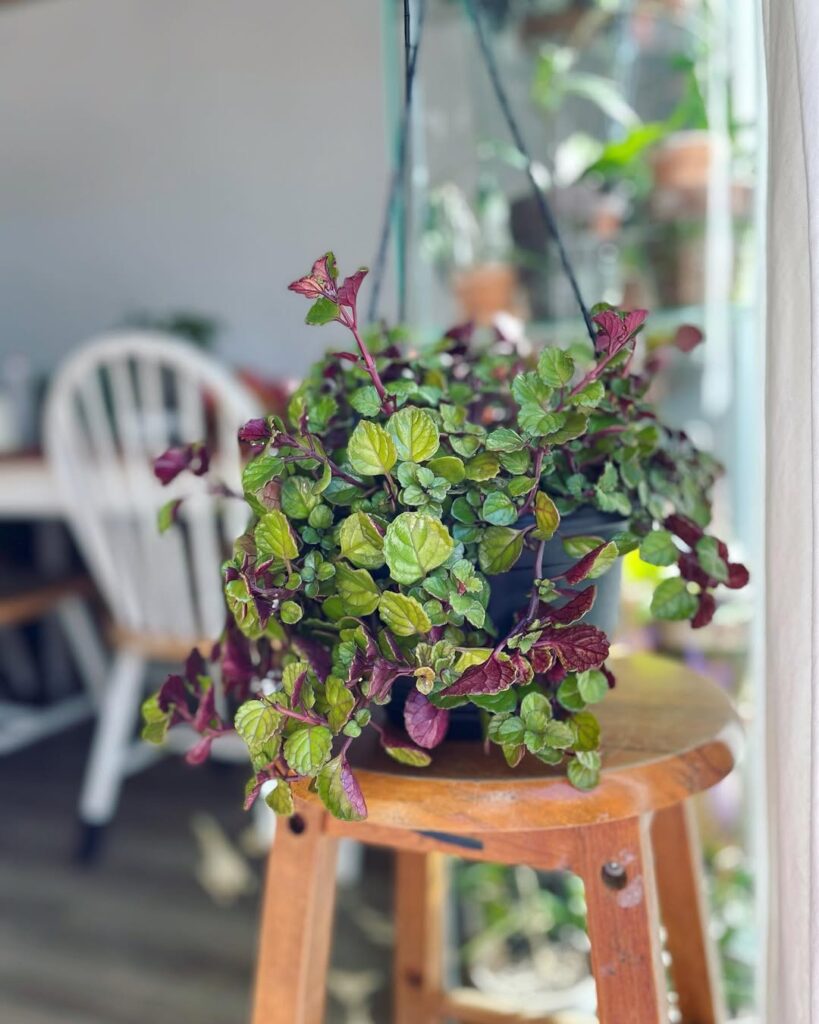
Swedish Ivy (Plectranthus verticillatus) is a charming trailing plant that, despite its name, is neither Swedish nor a true ivy. This compact plant features small, rounded, glossy leaves with scalloped edges growing along gracefully arching stems. As it matures, Swedish Ivy develops a cascading habit that makes it perfect for hanging baskets, windowsills, or elevated shelves, typically reaching lengths of 2-3 feet indoors. The foliage maintains a dense, bushy appearance with regular pruning, and the plant occasionally produces tiny white or pale purple flowers.
- Light: Bright, indirect light; can tolerate moderate light but avoid direct sunlight
- Water: Keep soil consistently moist but not waterlogged; allow top inch to dry between waterings
- Soil: Well-draining potting mix with good organic content
- Temperature: 60-75°F (15-24°C)
- Humidity: Average household humidity; tolerates dry air
- Fertilizer: Feed monthly with balanced liquid fertilizer during growing season
- pH: 6.0-7.0
